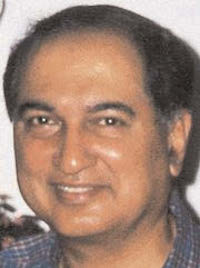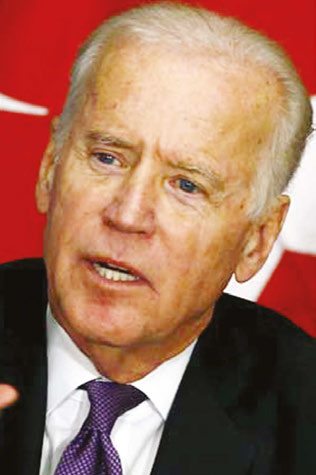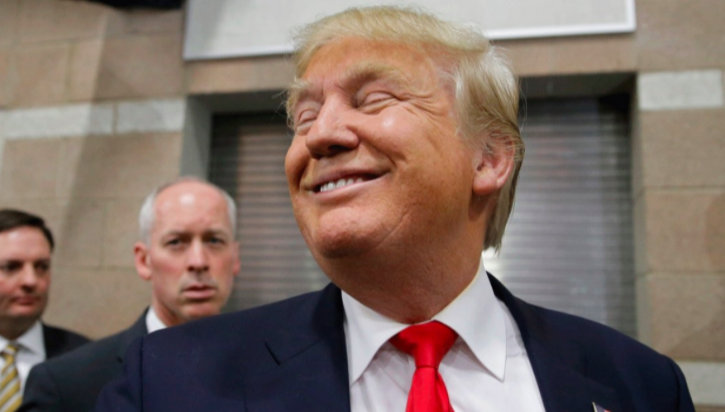
Travelling from east to west in the US, from the Atlantic to the Pacific, gave one an occasion to see the world’s sole superpower totally preoccupied in dealing with the aftermath of a terrorist strike. This terrorist attack, in which 14 innocent people were gunned down in the small town of San Bernardino in southern California, was executed by an immigrant couple of Pakistani origin. The uproar and outrage that followed, led to strident calls for ending immigration of Muslims, who are facing personal attacks, insults and desecration of their places of worship across the country. It is ironic that in the recent past, the US has been pontificating on the need for “tolerance” in India.
 One consequence of these developments has been the admiration in important sections of the American Establishment at how India, with an estimated Muslim population of 180 million, has maintained communal peace and harmony. It has been noted, that unlike in the US and Europe, few, if any, Indian Muslims have shown interest in joining the ranks of global terrorist organisations like the Al-Qaeda earlier, or the IS now. While visiting the US recently, Defence Minister Manohar Parrikar asserted that India is confident that its Muslim citizens will not be radicalised. Meetings with well-connected US friends in Washington and New York revealed a marked improvement in the climate of relations and widespread bipartisan support for India in the US Congress. The India-US relationship is, however, viewed by the Obama Administration in predominantly transactional terms. There is little empathy, or understanding, for India’s policies and concerns in its western neighbourhood, ranging from Pakistan and Afghanistan, across the Mediterranean, to Turkey. There are also questions about the reliability of the US to abide by commitments made on India’s “Act East” policies.
One consequence of these developments has been the admiration in important sections of the American Establishment at how India, with an estimated Muslim population of 180 million, has maintained communal peace and harmony. It has been noted, that unlike in the US and Europe, few, if any, Indian Muslims have shown interest in joining the ranks of global terrorist organisations like the Al-Qaeda earlier, or the IS now. While visiting the US recently, Defence Minister Manohar Parrikar asserted that India is confident that its Muslim citizens will not be radicalised. Meetings with well-connected US friends in Washington and New York revealed a marked improvement in the climate of relations and widespread bipartisan support for India in the US Congress. The India-US relationship is, however, viewed by the Obama Administration in predominantly transactional terms. There is little empathy, or understanding, for India’s policies and concerns in its western neighbourhood, ranging from Pakistan and Afghanistan, across the Mediterranean, to Turkey. There are also questions about the reliability of the US to abide by commitments made on India’s “Act East” policies.
Whether in New York, Washington or California, one could not help noting the widespread feeling that Prime Minister Narendra Modi has introduced qualitatively new dimensions in reinvigorating the US-India relationship. This was especially evident in the growing confidence about India in large sections of the business, industrial and high-tech establishments. The target of expanding the levels of bilateral trade in goods and services from $100 billion annually to $500 billion is no longer regarded as a pipe dream. There is confidence that India will continue on the path of perhaps being the fastest growing economy in the world in the years ahead. American business is, for the first time, seriously taking note of Indian determination to emerge as a strong industrial power by enhancing its manufacturing capabilities. American industries, in areas ranging from aerospace to motorcars, are now showing increasing confidence in India’s emergence as a significant industrial partner.
It is fortuitous that after an era when the Pentagon showed little interest in understanding India’s defence needs and strategic compulsions, the present Defence Secretary, Ashton Carter, recognises that India cannot be treated like Pakistan or Turkey. New Delhi has well-established defence partnerships with major arms suppliers like Russia, Israel, France, Germany and the UK. Japan has now joined this list of strategic partners. It is in this background, that readiness is now being shown by the US arms industry and the Pentagon to expand areas of cooperation into fields like aero-engines for multi-role combat aircraft, aircraft carriers, artillery and attack helicopters. This development has to be assiduously utilised to leverage our relations with other partners like Russia, where we have been experiencing problems of escalating prices and poor serviceability of critical weapons systems.
These developments do not mean that relations with the US are free of problems. In our immediate western neighbourhood, we are seeing the emergence of a tripartite US-China-Pakistan partnership to promote reconciliation with the Taliban, in a process from which India has been deliberately excluded. A return of the Taliban to the corridors of power in Afghanistan will have serious consequences for India’s security, given the Taliban’s past record and close ties with anti-Indian groups like the Jaish-e-Mohammed and the Lashkar-e-Taiba. In deference to Pakistani exhortations, the US has left the Afghan armed forces ill-equipped to face the Taliban-ISI challenge to the country’s sovereignty. While India is providing three attack helicopters, it needs to do far more to strengthen Afghan capabilities in areas like artillery, armoured vehicles and aircraft. Proactive diplomacy with Russia, its Central Asian partners neighbouring Afghanistan and Iran is required to achieve this.
The US shows little interest in a meaningful dialogue with India on developments in West Asia, evidently because of its traditional policy of looking at this region through a Pakistani prism. Washington needs to be reminded that India has crucial interests in this region, where six million Indians live, remitting back around $50 billion annually. India, which is a major importer of oil and gas, is one of the few countries which enjoys cordial relations with all three major regional powers – Saudi Arabia, Iran and Israel. India can play a useful role in encouraging de-escalation of regional tensions. Moreover, unlike its western neighbours, India is not afflicted by Shia-Sunni tensions.
There are indications that even in India’s eastern neighbourhood, President Obama is backtracking on promises he made on India’s quest for greater integration with institutions across the Indo-Pacific Region. This includes Mr Obama’s written commitment to back India’s membership of APEC. Trade lobbies in the US are now linking APEC membership for India to New Delhi diluting its stand on a host of issues, ranging from Intellectual Property Rights to trade liberalisation. It is being pointed out that Indian policies do not permit it to get membership of the American-led Trans-Pacific Partnership – a free trade area in which all major trading partners across India’s eastern shores, except perhaps for the present China, are set to join. This could lead to a loss of about $50 billion in India’s exports, including crucial areas like textiles. While President Obama is determined to push through legislation approving the setting up of the Trans-Pacific Partnership, he has just over a year left in office. This is a period India should utilise to determine how it would deal with the incoming Administration. India is now well positioned to have a business-like relationship with anyone who comes to power, be it Hillary Clinton, or even the mercurial Donald Trump!
(A former diplomat the author is Visiting Professor at the Centre for Policy Research, New Delhi, and a Senior Fellow at the Centre for Strategic and International Studies in New Delhi)





Be the first to comment